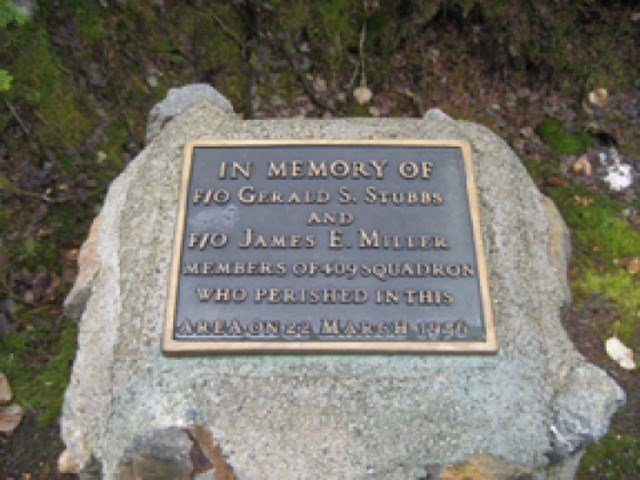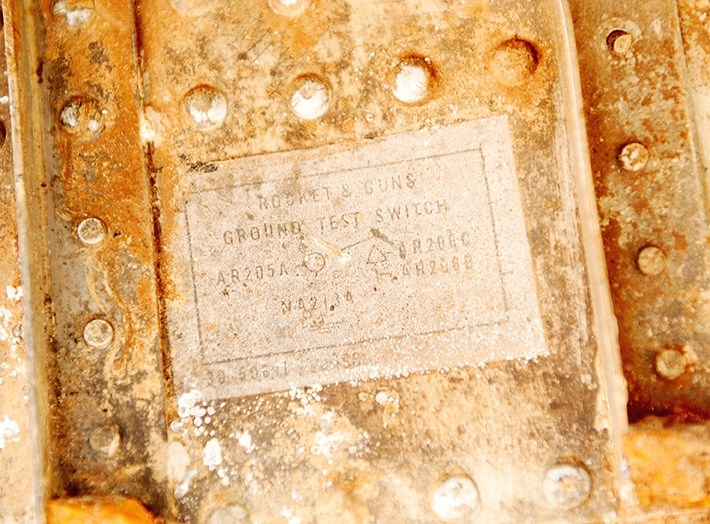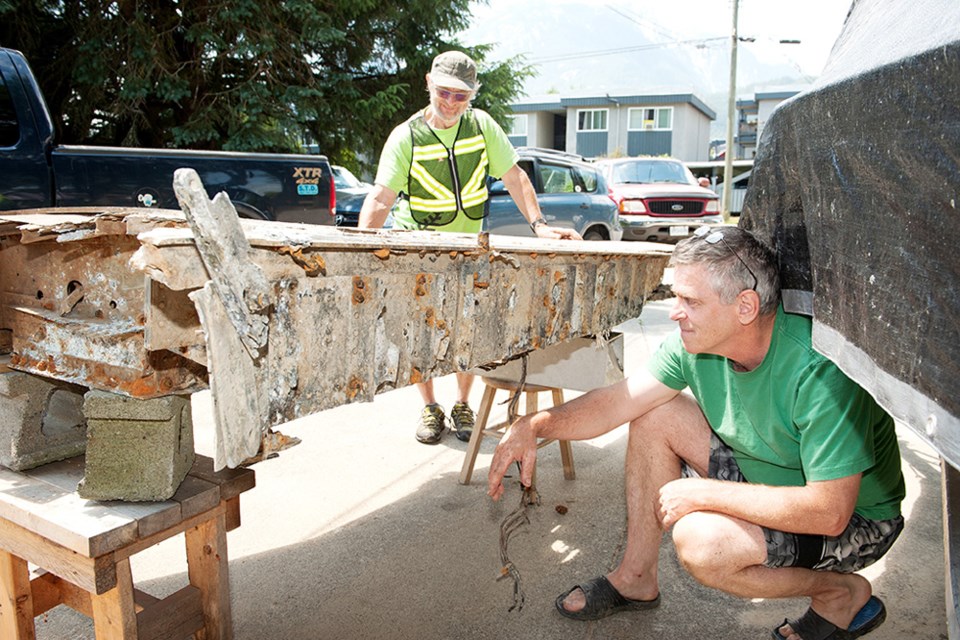**Updated: since we published this story, more information has been uncovered and more people are weighing in, casting doubt on the 1956 crash as being the source of the wing. We are digging into all that and will update this story along the way. Thanks to everyone who has shared what they know.
The mystery of the airplane wing recently uncovered in a Squamish ditch seems to have been solved.
Aviation experts tell The Chief that the metal part found last week deep in a gully on Government Road is likely from a T-33 — a two-person, single-engine jet — that crashed on March 22, 1956.
The crew of T-33, 21454, departed from Royal Canadian Air Force Station in Comox mid-morning that day on what was supposed to be a short, instrument flying practice flight, according to Col. Jon Ambler of the Comox Air Force Museum.
Flying officers Gerald Stubbs and James Miller had planned to fly within a 100 nautical mile radius of Comox, Ambler said in an email to The Chief.
The aircraft failed to return. The men were never found.

After looking at pictures of the wing sent to the museum by The Chief, Ambler said he and others at the museum believe what was found in Squamish looks like a piece of the lost plane.
“Canada’s sons and daughters serve in the Royal Canadian Air Force to defend Canada and our way of life through the skillful application of airpower. This is true today, just as it was true in 1956, in the height of the Cold War, when those two young men were killed,” Ambler said. “They made the supreme sacrifice while conducting essential training to ensure their readiness to defend us. Lest We Forget.”
The discovery of the wing in Squamish came about when Carl Halvorson, a member of the Squamish Environment Society, was picking up plastic debris and saw a shiny piece of metal sticking out of the ditch. He suspected right away it was a piece of a plane, he said.
“It was pretty obvious to me,” he said. “It just surprised me it was still there.”
District of Squamish crews had recently cut back the brush in the area, which exposed the piece somewhat.
When Halvorson alerted The Chief of his find, the paper contacted local history-buff John Buchanan who, along with Halvorson, dug the part up.
Only about 20 per cent of the wing was above ground. The rest was deep in the mud of the gully. The men worked to get it out on Thursday and then returned to finish the next day.
Buchanan took it home to his yard and painstakingly cleaned off the mud, grass, and debris while documenting in photos each piece. He found a weathered piece of a glass 7-Up bottle, which was another hint that the wing had been underground for a long time, Buchanan said.
As the dirt washed away, revealing the chipped green paint and aluminum underneath, Buchanan suspected the item might be part of a 1950s plane, but he didn’t want to jump to any conclusions.




